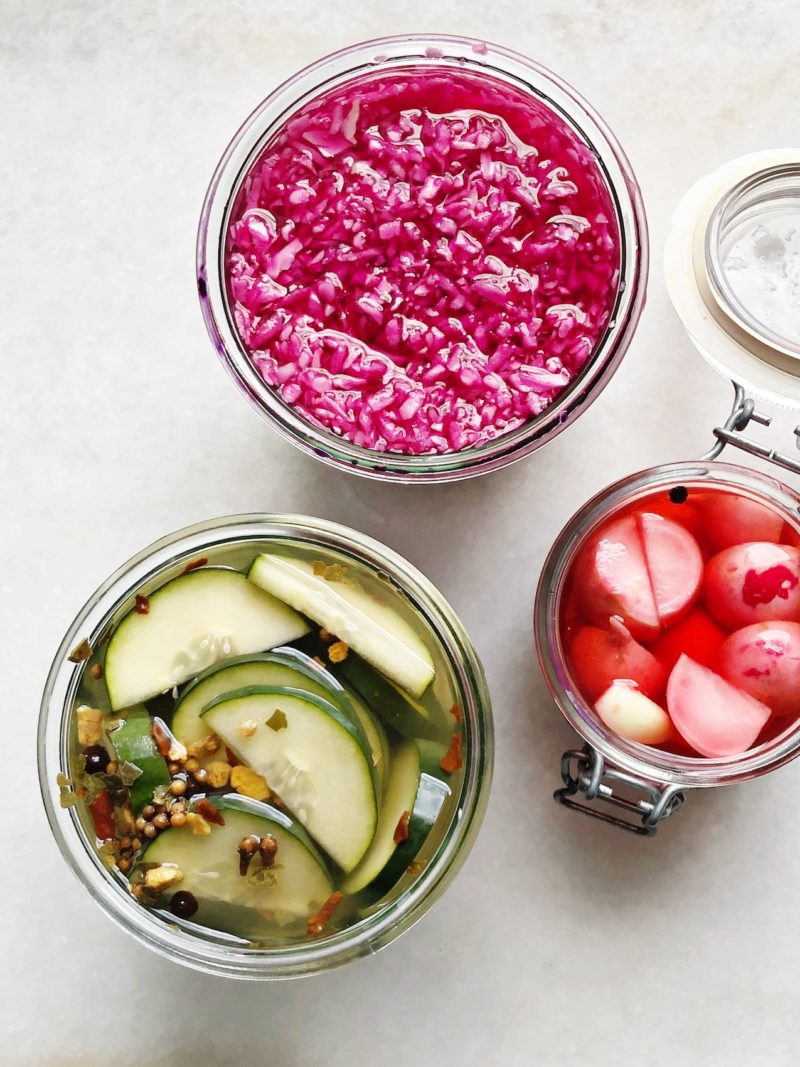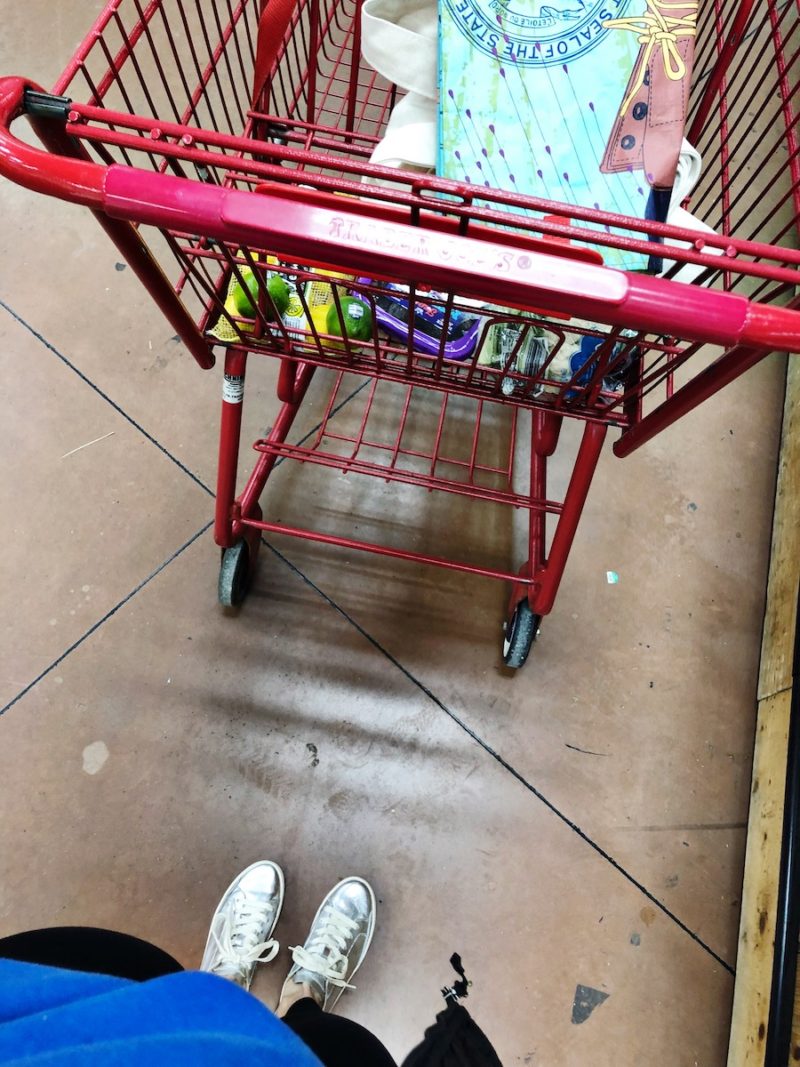Labels 101: How to Decode & Make Smarter Buying Decisions

This past weekend, a group of girlfriends and I rented a cabin a little over an hour away near Skaneateless, NY. It was a continuation of my birthday celebrations and the only things I requested were good friends, a fire, and plenty of wine. Let’s just say it did not disappoint. We spent two whole days lounging, eating way too much cheese, and laughing until our cheeks hurt. (If you happened to see my Instagram story, I apologize for any karaoke and/or dance parties you may have witnessed). It was exactly what we needed.
The town of Skaneateless itself is absolutely adorable with it’s low-key, quaint vibe and gorgeous lake. We stopped in a few stores before sitting down for lunch and something caught my eye, yet again. It was raw local honey in a cute little glass container with a sticker on the side that said “Gluten Free”. Most people would just glance over it because that label has become so common, but my immediate thought was “wait, why would honey have gluten in it to begin with?”.
I’ve been noticing this a lot more lately– labels such as “Vegan”or “Gluten Free” are being slapped on products [that would normally be that way by their nature] in order to appear as a “health food”. For example, I’ve seen “GF” on everything from yogurt labels to root beer. It would be like stamping “Vegan” on a carrot. Duh.
This incident got me thinking about labels and the marketing behind them. Whether we like it or not, the food industry is massive and out to make a profit. It’s up to us to be, what I like to call, “defensive shoppers” who read ingredients and understand what labels mean. But I get it, it’s beyond overwhelming and with all of the trends out there, how do we even begin to decode the crap?
The obvious answer could be to eat less items that come out of a box and stick to whole, real foods. We already (hopefully) know that. So this discussion is more for the other times when we are eating things from a container and want to be fully educated on those choices.
There are two things I want to zero in on. The first is about the pure fact that labels are sometimes used solely as a marketing tool to pull us in, like I just mentioned. Examples would be: “Gluten Free”, “Vegan”, “Low Fat”, “Healthy”, or “Natural” to name a few. Did you know that the term “Healthy” has almost no regulations? There are plenty of people who eat a gluten free or low sugar diet for a variety of reasons. This is not about the lifestyle choices themselves, but more about the fact that those “health” labels don’t necessarily equate to being healthy. Low fat normally means loaded with sugar (side note: healthy fats are your friend, we’ll talk about that another time). Gluten Free could mean the gluten was replaced with other health-forward ingredients instead OR it could mean they’ve used 13 different starches, fillers, and binding agents– including corn syrup. I’ve seen GF bread with more ingredients than you even want to count. The point is: take the time to read and understand what you’re actually putting in your body.
Secondly, I want to talk about the labeling on eggs, meat, and poultry. In my opinion, if you eat animal products and are going to splurge on anything in your cart, this is where to do it. You can forgo the organic kale if you’re able to choose grass-fed meat, ok? With the amount of hormones, antibiotics and GMO feed being used– it’s more important than ever to understand the quality.
To put it simply, when animals are injected with antibiotics (to rid them of disease) or hormones (to make them grow bigger and faster), they pass it directly to us. I could go on about antibiotics for days; they ruin our guts, kill off the healthy bacteria we need to keep strong immune systems, and are truthfully handed out like candy in our modern time. They’re used on so many farms because the animals are kept in disgusting, overcrowded environments where disease thrives. As far as hormones– why would we want extra, synthetic hormones pumped into our bodies? It throws off our endocrine system and wreaks havoc on our hormonal balance. Lastly, when you purchase animal products from a farm where the animals are humanely raised and cared for with love– it makes its way into the food. It may sound kind of “woo woo”, but think about what would happen to our insides and bodies if we were stressed out, scared, and traumatized on a daily basis– until we were killed. It has a huge effect on their quality of life and health.
I’ve included a list below of the top food labels and what they actually mean, by government standards. I find the labels used on animal products are the most helpful because they start to sound similar and can get confusing. When it comes to other boxed foods, it will always be best to just read the ingredients; regardless of what fancy words are used on the front!
We don’t have much control over the companies or industries that flood our stores, but we do have a choice in who we give our dollars to.
LABELS + GOVERNMENT STANDARDS
-
Antibiotic-Free: No antibiotics were used during animal’s lifetime.
-
Cage-Free: Birds are raised without cages. It doesn’t decipher whether they were outside in a pasture or inside in a crowded environment.
-
Fair-Trade: Farmers and/or workers have received a fair wage and work in acceptable conditions.
-
Free-Range: It’s only defined by the USDA for egg & poultry production. The label can be used as long as producers allow birds the access to the outdoors. It doesn’t mean they’re cruelty-free or antibiotic free.
-
GMO-Free: No genetically engineered organisms were used.
-
Grain-Fed: “100% vegetarian diet” means that no animal by-products are in the feed.
-
Grass-Fed: The animals are fed grass. This meat is leaner, lower in fat and calories than grain fed. They are not fed grain, animal by-products, synthetic hormones or antibiotics to promote growth/prevent disease.
-
Healthy: Foods must be low in saturated fat and limited in cholesterol.
-
Natural: No standards exist for this label except when used on meat or poultry. “Natural” meat can only undergo minimal processing and cannot contain artificial colors, flavors or preservatives. It does not mean they’re necessarily organic, humanely raised, or free of antibiotics /hormones.
-
Pasture-Raised: Animals were raised on a pasture where they could eat grass/plants over feed/grain. They carry on their natural behaviors. Similar to grass-fed, but more clear on being raised outdoors. *(My opinion: this is ideally the best kind to buy)
-
RBGH-Free or RBST-Free: Bovine Growth Hormone is a GMO hormone injected into dairy cows to increase milk production. It has not been tested for safety and is not allowed in the EU, Canada and others. Organic milk is RBGH free.
-
Organic: All organic agricultural farms must meet the following guidelines
-
No synthetic fertilizers, pesticides, or sewage sludge for 3 years prior to certification & continuing.
-
No GMO used (100% organic feed)
-
Must practice positive soil building, conservation, manure management, and crop rotating practices
-
No antibiotics or hormones
-
Must keep records of all operations
-



